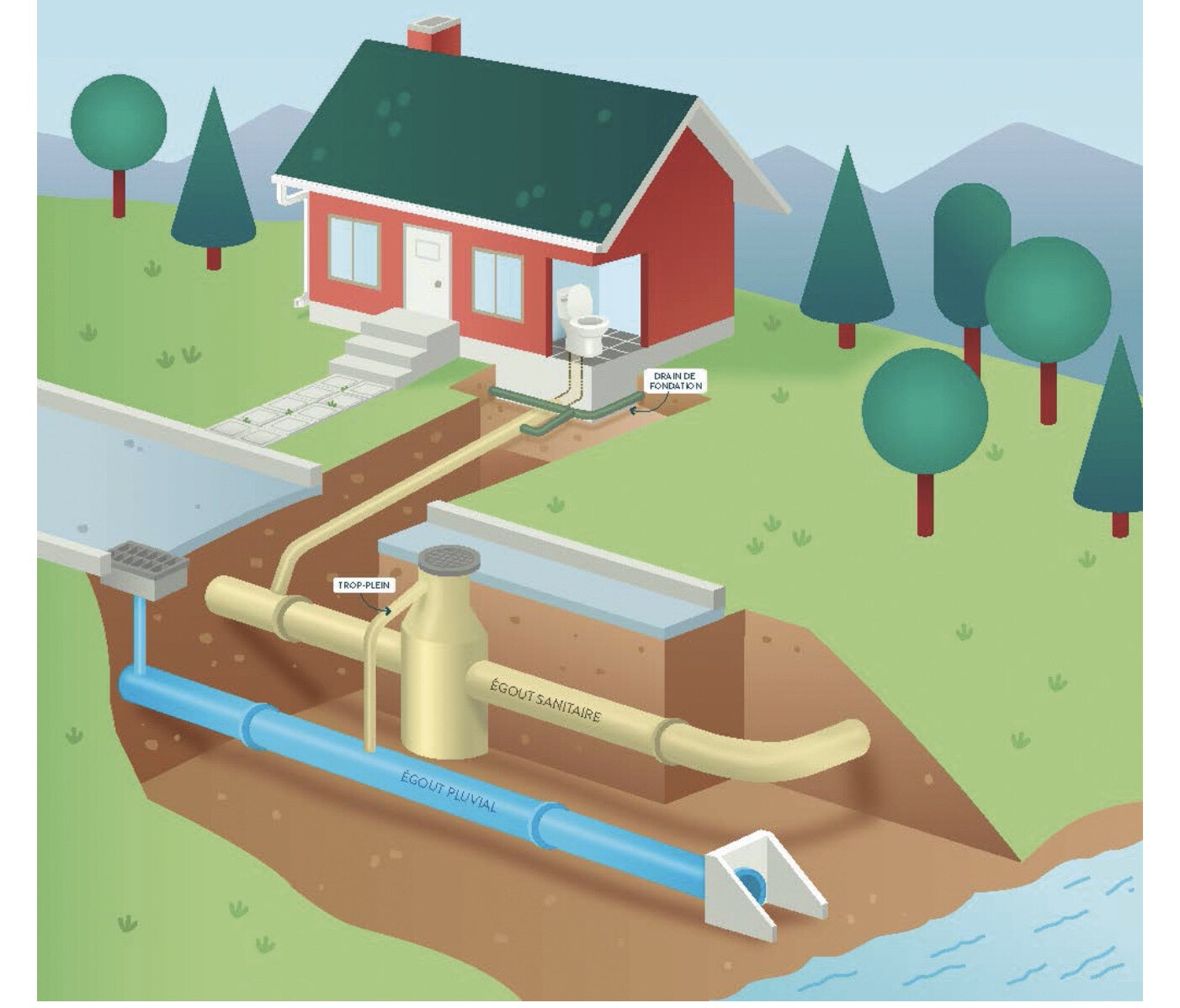Municipal sewage certification requires review of overflow structures at Notre-Dame plant
Sonia Roy
Since January 2022, Gatineau has been in possession of a municipal sewage certification (Attestation d’assainissement municipal, or AAM) for the Notre-Dame wastewater treatment plant, which treats water from the Aylmer, Hull and Gatineau sectors. This certification, which is a direct result of the Ministère de l'Environnement et de la Lutte contre les changements climatiques (MELCC) initiative for better management of municipal wastewater in natural environments, allows for the supervision of a municipal wastewater treatment facility (ouvrage municipal d’assainissement des eaux usées, or OMAEU) by political authorities. In other words, with such a certificate, the MELCC has legal recourse to establish more restrictive standards for the discharge of wastewater into natural waterways or ecosystems. A similar certification is being developed for the region's second wastewater treatment plant, the Masson-Angers’ Étangs aérés, which serves the Masson-Angers area as well as Buckingham.
There are currently 87 overflow structures (which are OMAEUs) in the sanitary sewer system, whose function is to convey wastewater to the Notre-Dame plant and the Masson-Angers’ Étangs aérés. These overflow structures, of which there are 74 in the Notre-Dame plant network, are an emergency measure that, in the event of heavy rain or melt, ensures that excess wastewater is discharged into neighboring environments. These structures, which are needed to protect the population and essential buildings, have specific standards that must be met regarding the number of overflows allowed per year. The City of Gatineau's current AAM provides for the creation of programs to correct problematic or non-compliant OMAEUs within the annual permitted discharge standards. With the new certification requirements, 23 of the 74 overflow structures in the sanitary sewer system served by the Notre-Dame plant must be modified. The remedial plan for these appears to be a priority for the City of Gatineau since the AAM was received, as it now faces fines of up to $7,500 to $1,500,000 if the discharge standards are not met. Also, any construction activity or building additions connected to the sanitary systems are likely to put pressure on the overflow structures, which can lead to overflows and ultimately, fines. Real estate developments may be automatically denied if the area is served by a problematic overflow structure and a remedial plan is not in place.
As of September 2022, 23 remedial plans will be submitted to the MELCC, followed by the study of the budget and related costs in December 2022. If the remedial plans are approved, the work to modify the OMAEUs is planned for the period 2023-2027. As for the budget related to the work on Gatineau's sanitary network, Mayor France Bélisle mentioned at the July 5 meeting of the plenary committee that "There are many grants available from the federal and provincial governments for the entire overflow file. I expect that when the teams return in the fall, work will be done to tell us what programs are available and what approach we will take to get the maximum amount of money, because there is money.”.
You can view the entire presentation of the City of Gatineau on this subject via the webcast section of the City of Gatineau's website, or at the following link: https://villes.pqm.net/gatineau/archive/index.php?id=1845.
Photo caption: (1) The Notre-Dame wastewater treatment plant in Gatineau / (2) image of an overflow structure
Photo credit: Sonia Roy & & Centre d’interprétation de l’eau de Laval

